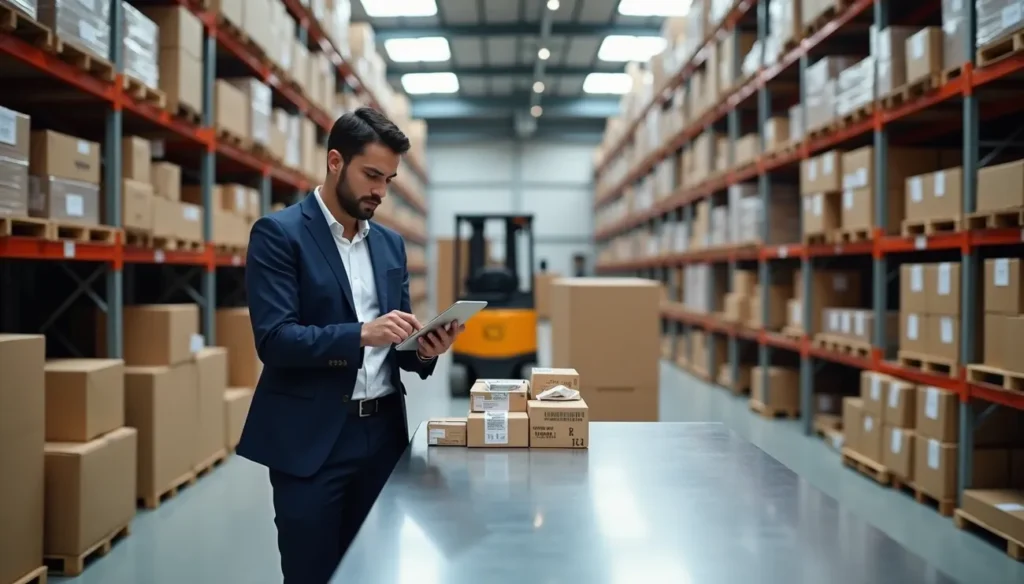From Retail to Wholesale: A Money-Making Guide for E-commerce Stores

The US wholesale trade industry brings in $71 trillion in annual sales. This makes it a great chance for e-commerce businesses to boost their revenue streams. Global eCommerce will reach $6.4 trillion in 2023. Learning how to sell wholesale products has become crucial for online retailers who want to grow.
The wholesale market will grow 3.4% yearly from 2023 to 2030. B2B revenue from digital channels will jump 11% between 2023 and 2025. These numbers make wholesale ecommerce platforms an attractive investment for businesses with proven products. Wholesale creates steady revenue and lets your business save money through bulk orders.
Store owners who have loyal customers and steady sales can naturally move into wholesale. This piece shows you the best ecommerce platform for wholesale operations. You’ll learn how to sell wholesale products to retailers and get a complete roadmap for wholesale distribution. Starting costs range from $10,000 to over $100,000. While this seems like a big investment, businesses that prepare well can see substantial returns.
Why E-commerce Brands Are Shifting to Wholesale
E-commerce businesses now see the value of growing beyond direct-to-consumer (DTC) sales into wholesale distribution. This change shows a strategic move for online retailers who want to broaden revenue streams and scale operations better.
The rise of B2B eCommerce
The global B2B ecommerce market will reach an extraordinary USD 36 trillion by 2026. Advanced manufacturing, healthcare, and professional services drive this growth strongly. Over 90% of B2B companies have adopted virtual sales models since 2020 to meet changing buyer expectations. B2B buyers expect the same smooth online experience they get in B2C transactions, with 73% demanding this level of service.
Modern B2B customers feel more comfortable with digital purchasing. A 2024 survey reveals they will place orders exceeding $500,000 online. Millennials drive this digital transformation in part. They make up nearly half of B2B buyers, and 44% serve as primary decision-makers.
Benefits of adding wholesale to your DTC model
Adding wholesale to existing DTC operations creates major advantages. Wholesale provides steady revenue that broadens your business’s income sources. Your larger orders lead to economies of scale, which lower per-unit costs and can boost profit margins.
Wholesale partners offer great marketing opportunities through co-promotion. Your products reach new customers through retailer channels, which builds brand awareness and trust. Brands using B2B on platforms like Shopify report up to 50% more frequent reorders compared to other B2B selling methods.
Signs your business is ready for wholesale
Strong DTC sales growth shows market demand for your products—a key sign of wholesale readiness. Your supply chain should handle larger orders without quality issues. A clear target market helps identify and approach potential wholesale customers effectively.
The transition to wholesale needs flexible cash flow to handle extended payment terms that wholesale buyers expect. Your business needs steady finances to cover upfront production costs while waiting for wholesale payments.
How to Prepare Your Business for Wholesale Success
Your brand needs strategic preparation to move into wholesale. The right time comes when your brand shows signs of expansion readiness. Let’s build a foundation that will give a successful start in this profitable channel.
Define your wholesale strategy and goals
Start by creating a clear strategy with your exact target market in mind. You need to choose between boutique stores, big-box retailers, or other wholesalers based on their size, industry, and location. The next step is deciding how to reach potential partners through your website, trade shows, direct outreach, or specialized software platforms that connect you with thousands of retailers. A smooth onboarding process and user-friendly ordering portal will create positive first impressions.
Set competitive wholesale pricing
Your pricing strategy determines how attractive you’ll be to potential wholesale clients. You should calculate total production and overhead expenses first. Then add a margin that lets retailers mark up prices. Smart wholesalers use tiered pricing systems to reward bulk purchases with discounts while keeping profits healthy. Simply halving retail prices often cuts profits too thin. Think about absorption pricing or other pricing strategies that distinguish between different customer segments.
Ensure production and inventory scalability
Check if your production capacity can handle bigger, more frequent orders before expanding. Many brands jump into wholesale but find they lack manufacturing power to meet demand. This damages their reputation quickly. You need a centralized inventory system that syncs with your wholesale storefront to avoid overselling and stockouts. Strategic collaborations with suppliers will help ensure reliable support for higher demand levels.
Understand legal and tax requirements
Sales tax rules in the United States are straightforward – it applies at the point of sale to end users. You don’t collect sales tax when selling to retailers since they aren’t end users. Retailers must show you their “resale certificate” or “reseller’s license” to prove they can collect sales tax. You should either refuse service or charge sales tax without this documentation. Your location and products might require specific permits, licenses, or certificates. This becomes crucial with specialized items like food, stuffed toys, or bedding.
Setting Up Your Wholesale Operations
Setting up wholesale operations that work needs the right platform and system integration. Here’s what you need to know about the key parts of running a successful wholesale business.
Choose the best ecommerce platform for wholesale
The right platform choice is vital for wholesale success. B2B eCommerce market projections show it will reach USD 36.16 trillion by 2026. These top platforms serve wholesalers well:
- Experlogix Digital Commerce for complex B2B operations with large catalogs
- Shopify Plus for quick setup and multiple storefronts
- BigCommerce B2B Edition for shared shopping lists and corporate account management
- NetSuite SuiteCommerce for integrated inventory and customer relationship tools
Build a wholesale-friendly website
A successful wholesale website needs customer-specific pricing, tiered pricing, and self-service ordering. In fact, 86% of customers would rather use self-service tools for reordering than talk to sales representatives. The site must have SSL certificates for security and wholesale-specific registration forms to screen potential buyers properly.
Integrate inventory and order management systems
Inventory integration helps customers see updated stock information immediately and prevents frustrating out-of-stock situations. One-way integration pushes inventory data to your ordering platform. Two-way integration makes systems talk to each other automatically.
Offer flexible payment and shipping options
Payment variety matters – 83% of B2B buyers look at payment options when picking suppliers. Your business should accept credit/debit cards, bank transfers, and net 30/60/90 terms. The shipping setup should work with carriers like UPS and USPS that handle bulk orders well.
How to Sell Wholesale Products to Retailers
Your wholesale operations need retail buyers after you get started. The success of wholesale distribution depends on how well you market and build relationships.
Create a compelling wholesale catalog
A wholesale catalog is your best sales tool. Your well-laid-out catalog tells your brand story when you’re not there to do it yourself. Make sure to add high-definition product images, detailed descriptions, pricing information, and your terms and conditions. Digital catalogs help you reach more people at lower costs. Note that your contact information should be on every page because retailers often want a phone number to ask questions right away.
Use trade shows and B2B marketplaces
Trade shows are vital to find new wholesale customers. 91% of high-performing businesses now focus more on these events. These shows let you display new products, see what competitors are doing, and connect with potential buyers. B2B marketplaces generate over USD 350 billion in sales each year. They give you access to motivated buyers without the hassle of finding new customers yourself.
Make email and direct outreach work
Personal outreach still works well in our digital age. Research potential retailers’ business model, customer base, and market challenges before you contact them. This helps you offer solutions that fit their needs.
Build long-term retailer relationships
The key is to become a trusted advisor instead of just taking orders. You build trust when you communicate proactively about delays or issues. Offering unique experiences like trunk shows or pop-up opportunities helps too.
Conclusion
Moving from retail to wholesale is a most important growth chance for 5-year old e-commerce businesses. The wholesale market keeps changing faster and provides stable revenue streams. Online retailers ready for the next step can benefit from powerful economies of scale. Of course, this trip needs careful preparation. You must define clear strategies and competitive pricing while making sure your production can meet what buyers just need.
The upfront costs might look big, but long-term benefits make wholesale expansion worth it for well-prepared businesses. You get access to larger order volumes. You broaden your revenue streams. You reach completely new customer segments through retail channels that are already set up.
Your success in wholesale depends on picking the right e-commerce platform. You need to build wholesale-friendly websites and set up reliable inventory management systems. On top of that, you can propel development by creating compelling product catalogs and building strong relationships with retail partners.
Note that wholesale is a natural next step for e-commerce businesses with proven products and steady sales. Once you build your direct-to-consumer foundation, wholesale is a chance to create a truly adaptable business model. Qualified e-commerce store owners should think over this profitable venture that could revolutionize their business from a niche online retailer into a powerful market presence with multiple revenue channels.





